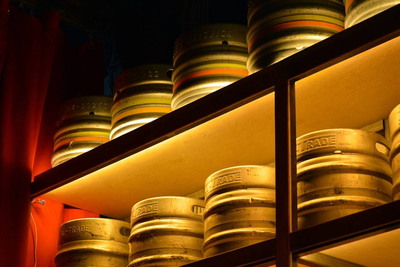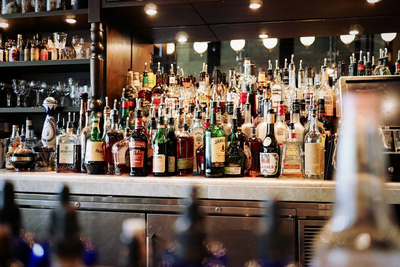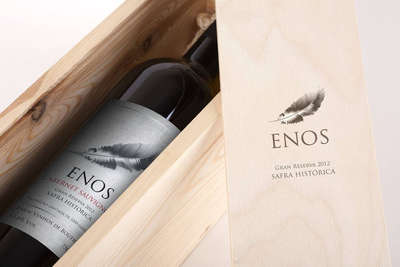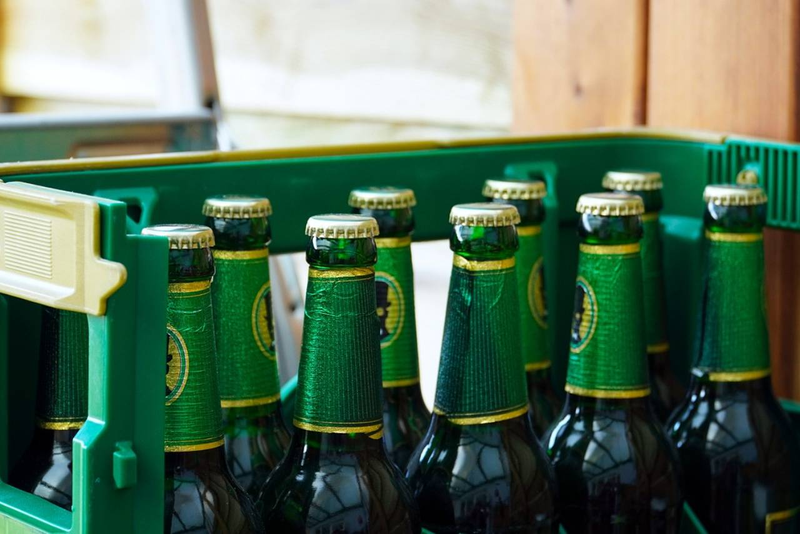What is barcode software?
Barcode software is a program that generates barcodes, which are machine-readable codes used to track products, inventory, and other data. Barcode software can be used to create barcodes for products, labels, and other purposes.
How to Select the Right Barcode Software Solution For Your Business
Traditional Methods of Inventorying Liquor

Inventory management is one of the main functions of running a food and beverage business.
For a bar, it's important to have an accurate record of its beer, wine, and liquor bottles and ingredients like hops, yeast, and malt. The business needs to have a clear idea of which stocks are depleting and need to be reordered, which items sell the most, which are expected to see high demand, which give the highest returns, what is lost or underutilized, what is purchased more than required and therefore wasted, and so on.
A conventional inventory management system uses on-site software, spreadsheets, or manual pen-and-paper methods to get the job done.
When managing stock levels manually, suppliers are contacted via text messages, phone calls, emails, and fax, and stocks are counted, registered in the system, and updated by hand.
Manual stock-taking may work for small enterprises with modest requirements and modest goals, but in order for major organizations to succeed, cutting-edge technology must be put to use.
As it is, inventory management is a tedious, but unavoidable exercise. Companies that place orders manually with vendors using phone calls, spreadsheets, texts, and emails find it burdensome to manage inventory and fail to prevent errors from affecting the stock-take.
As a result, inventory is either under- or over-estimated, making it hard for businesses to keep track of the goods that are ordered, sold, bought, wasted, or lost.
Additionally, manual inventory management consumes a significant amount of time and labor, requiring more workers than necessary to complete a job that can really be completed automatically by cutting-edge software. The tiniest error in counting, recording, or updating inventory or faulty demand forecasting could have an adverse effect on the business.
Spreadsheets don't solve all the problems of manual stock-taking either. While they do use computer technology, auditing and updating spreadsheets still takes effort and time. Moreover, they are not easily scalable.
Software solutions, on the other hand, make inventorying significantly hassle-free. However, certain software solutions can only be stored on computers on-site. The major disadvantage of this kind of software solution is that it can only be accessed by a limited number of linked gadgets and operates on a closed network. Also, such legacy software solutions are ill-prepared to manage accidental data loss.
Modern Liquor Inventory Management
A modern liquor inventory management system depends mostly on computer programs that completely automate inventorying. Businesses can rapidly and accurately measure their inventory levels and decide which products need to be reordered and how much needs to be reordered with the aid of a sophisticated software system.
These software solutions are essentially cloud-based, which allows them to be accessed at the same time by several users. Data can be viewed by users from anywhere in the world, using any mobile device, and at the user's chosen time. Updates to stock levels can also be viewed in real time. These advantages of a cloud-based system make decision-making easier and sharper by facilitating brainstorming by key executives. Business owners can also track inventory information independently at their leisure.
A big company functioning across numerous locations as well as sales channels can't do without a sophisticated inventory management system. With the help of such a system, businesses can interact with numerous vendors, manage a sizable quantity and variety of items, and keep track of a sizable customer base.
Barcodes of products read by scanners at the point of sale (POS) typically marks the beginning of inventory management by cloud-based software. As products are sold online or in the physical store, the POS system updates stock levels.
The POS system, integrated with the inventory management system, sends out notifications when the level of a product starts to decline. The liquor inventory management software then springs to life, placing an order and electronically informing the supplier of the order.
Business owners can rapidly calculate stock levels and account for each ingredient, thanks to the advanced inventory monitoring and data entry templates that come with these cloud-based systems.
Another key feature of cloud-based inventory management software is that detailed reports and actionable insights are provided on a range of inventory issues, such as over-portioning, theft, food waste, and soaring costs of food. By linking inventory management systems with other departments of bar and restaurant management, operational efficiency can be perceptibly increased.

Control alcohol inventory costs with an easy to use bar management software.
Try a free download now.
What is Barcode Inventory Management?

Barcodes are alpha-numeric codes that digitally represent data. These codes can be seen on product labels. The data contained in the barcodes can be unlocked with the help of corded or cordless barcode scanners.
Barcode scanners are necessary for accurate, timely, and effective inventory management. They interpret product information such as cost, manufacturing date, weight, expiration date, manufacturer's name, and so on. A barcode scanning system assists in stock recording and gives real-time information on inventory levels, making stock counts easier.
When barcodes are put through a scan, the decoded information is immediately sent to the associated barcode scanner inventory software that had been loaded onto a computer or handheld device like a smartphone. This software can take the form of an app that facilitates data access on the go, from any location, and at any time.
The 1D barcode or one-dimensional barcode, which is made up of black lines that are vertically drawn on a white background, is the most commonly used barcode. The information about a product is read by scanners from the space between the barcode's vertical lines.
In the case of 2D barcodes or two-dimensional barcodes, product information is encoded in squares, and dots, as well as other patterns. This ensures that a great deal of information can be crammed into the limited space of a product label. A QR code is a good example of a 2D barcode. A smartphone can work as a 2d barcode scanner.
You may also use a usb barcode scanner that connects directly to a laptop or desktop computer through a USB port, and uses software you can easily upload. Apart from that, you also have direct part making (DPM) scanners that come with imagers capable of interpreting barcodes etched directly into the product surface (metal or plastic).
Hardware + Software
A barcode inventory system uses pieces of hardware such as computer terminals, printers, barcode scanners, and mobile devices. This barcode inventory hardware acts as a receptacle for cloud-based inventory software
Barcode systems are used to automate the collection of data when manual methods are neither speedy nor efficient. Eight to twelve alphanumeric/numeric characters separated by white and black lines make up barcodes. These codes house minute details about a product.
A printer is used to produce barcode labels for goods and assets. The barcode label is then stuck to the item. This barcode can be scanned with the help of a barcode reader/scanner. The product information is decoded by these scans and delivered to the mobile device or computer and presented on the screen in a way that users can easily understand.
As mentioned earlier, scanners may be connected to the mobile device/computer in a wired or wireless manner.
The information generated by barcode scanning is received by inventory management software programs. Product information can be easily transferred from the barcodes to the mobile screen using a barcode scanning app. Simply launch the app, then aim your smartphone camera at the barcode and all the necessary information can be unlocked.
How Does Barcode Inventory Management Work?
The functioning of barcode-based inventory management has been touched upon in the earlier sections. Let's now go deeper and look at the technicalities.
There are usually three parts to a barcode scanner. These are the sensor, the illumination system, and the decoder. A barcode scanner typically scans the white and black components of a barcode by throwing a red light on the barcode. The encoded information is then translated into matching text and displayed on the computer or mobile screen.
The barcode scanner's sensor detects the reflected red light from the scanner's illumination system and produces an analog signal that is transferred to the decoder.
The decoder makes sense of the signal and ensures the validation of the barcode while changing the encoded information into text.
How to Select the Right Barcode Inventory Management Solution

Inventory management can be made quick and easy with the right barcode scanner. You should prioritize the Ingress Protection (IP) rating of your device, especially if you operate in a food service organization where there is every chance that the scanner may be dropped down, get submerged in water, or come in contact with dust.
IP ratings are standards developed by the International Electrotechnical Commission (IEC) that demonstrate the degree of resistance offered by electrical devices to dust and fluids. These ratings are made up of two digits, with the first representing the extent of resistance to solid particles, and the second representing the degree of resistance to water. See to it that your barcode scanners are at least IP68 rated, meaning they are water- and dust-proof.
Select your scanners based on the environment in which you operate. If you plan to use them in a storehouse with poor lighting, choose ones with low brightness settings. Increased brightness is required in well-lit areas.
The keys on the scanner should be ergonomic as well. They ought to be big enough to be used by bar and restaurant staff while accepting payments or counting inventory while wearing gloves.
The barcode scanning distance and type of code must also be considered while selecting the scanners. If objects are to be scanned from a distance, scanners with extended range need to be used.
Liquor Inventory FAQs
1 . When should you set up bar inventory software?
A. You may believe that you won't require bar inventory software until your establishment is operational. That's partly accurate. You won't require all the software functions while you are still planning your bar's launch. Having said that, you would need a software solution for managing inventory at your bar for as long as you own and run the bar. So, choosing bar inventory software and setting it up before starting the business would give you an advantage.
2. How frequently should you take inventory?
A. How much inventory you have, how well it's organized, and how you choose to count it will all play a role in deciding how often you need to take inventory. Some locations do inventories just once every month. A monthly inventory count is perfectly acceptable. However, you will be able to stay better organized and prevent counting errors with weekly or bi-weekly stock-taking.
3. How should a bar inventory be effectively managed?
A. Bar inventory management is labor-intensive. However, in order to stay on top of your business you can't ignore counting and managing your stocks. The efficiency and effectiveness of inventory management can be significantly enhanced with the help of modern cloud-based software. It automates the counting of liquor inventory, adjusts stock levels automatically and in real time, and helps maintain a steady and continuous flow of data, enabling businesses to take the right decisions.

